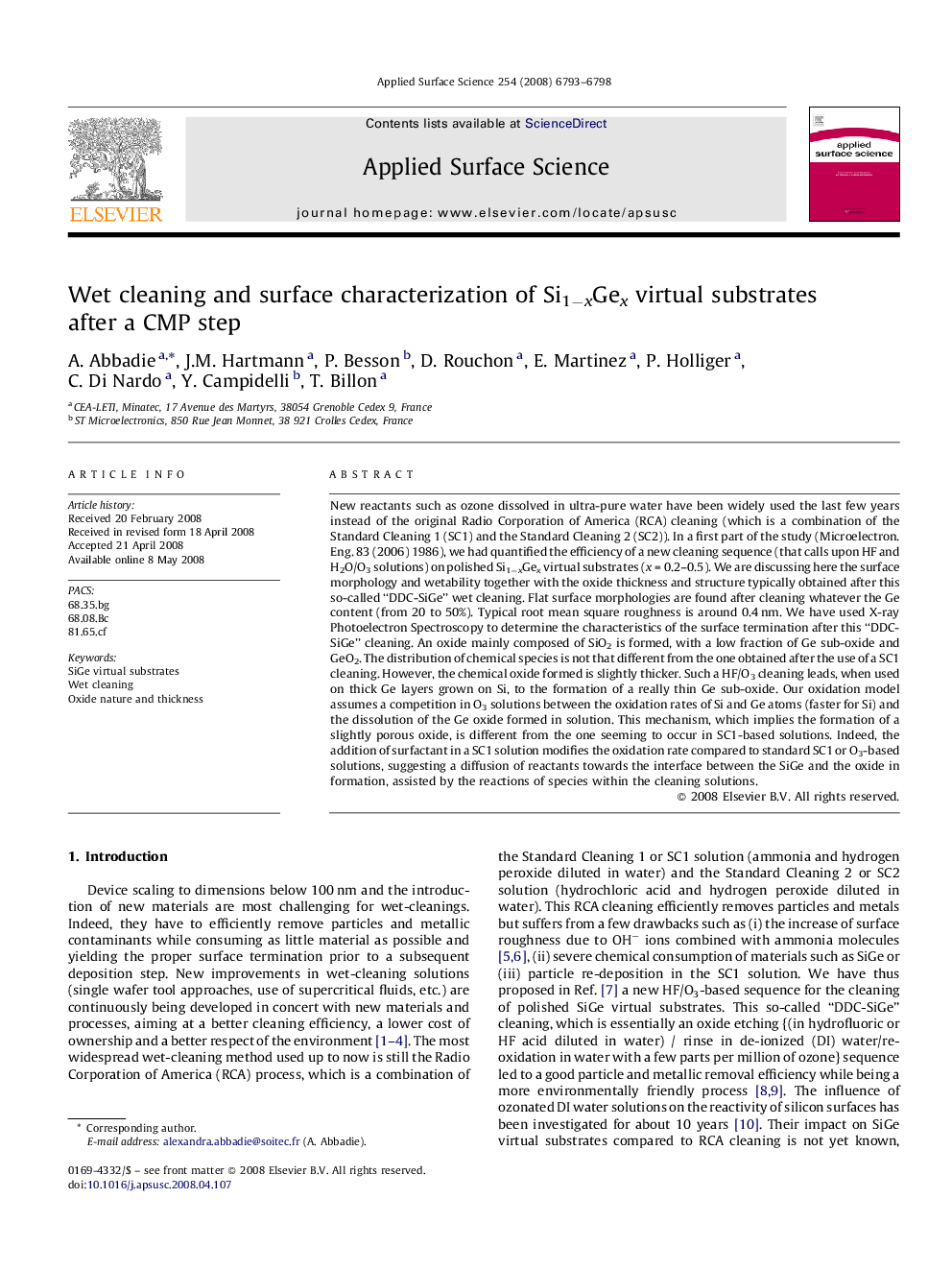| کد مقاله | کد نشریه | سال انتشار | مقاله انگلیسی | نسخه تمام متن |
|---|---|---|---|---|
| 5361537 | 1388274 | 2008 | 6 صفحه PDF | دانلود رایگان |
عنوان انگلیسی مقاله ISI
Wet cleaning and surface characterization of Si1âxGex virtual substrates after a CMP step
دانلود مقاله + سفارش ترجمه
دانلود مقاله ISI انگلیسی
رایگان برای ایرانیان
موضوعات مرتبط
مهندسی و علوم پایه
شیمی
شیمی تئوریک و عملی
پیش نمایش صفحه اول مقاله

چکیده انگلیسی
New reactants such as ozone dissolved in ultra-pure water have been widely used the last few years instead of the original Radio Corporation of America (RCA) cleaning (which is a combination of the Standard Cleaning 1 (SC1) and the Standard Cleaning 2 (SC2)). In a first part of the study (Microelectron. Eng. 83 (2006) 1986), we had quantified the efficiency of a new cleaning sequence (that calls upon HF and H2O/O3 solutions) on polished Si1âxGex virtual substrates (x = 0.2-0.5). We are discussing here the surface morphology and wetability together with the oxide thickness and structure typically obtained after this so-called “DDC-SiGe” wet cleaning. Flat surface morphologies are found after cleaning whatever the Ge content (from 20 to 50%). Typical root mean square roughness is around 0.4 nm. We have used X-ray Photoelectron Spectroscopy to determine the characteristics of the surface termination after this “DDC-SiGe” cleaning. An oxide mainly composed of SiO2 is formed, with a low fraction of Ge sub-oxide and GeO2. The distribution of chemical species is not that different from the one obtained after the use of a SC1 cleaning. However, the chemical oxide formed is slightly thicker. Such a HF/O3 cleaning leads, when used on thick Ge layers grown on Si, to the formation of a really thin Ge sub-oxide. Our oxidation model assumes a competition in O3 solutions between the oxidation rates of Si and Ge atoms (faster for Si) and the dissolution of the Ge oxide formed in solution. This mechanism, which implies the formation of a slightly porous oxide, is different from the one seeming to occur in SC1-based solutions. Indeed, the addition of surfactant in a SC1 solution modifies the oxidation rate compared to standard SC1 or O3-based solutions, suggesting a diffusion of reactants towards the interface between the SiGe and the oxide in formation, assisted by the reactions of species within the cleaning solutions.
ناشر
Database: Elsevier - ScienceDirect (ساینس دایرکت)
Journal: Applied Surface Science - Volume 254, Issue 21, 30 August 2008, Pages 6793-6798
Journal: Applied Surface Science - Volume 254, Issue 21, 30 August 2008, Pages 6793-6798
نویسندگان
A. Abbadie, J.M. Hartmann, P. Besson, D. Rouchon, E. Martinez, P. Holliger, C. Di Nardo, Y. Campidelli, T. Billon,